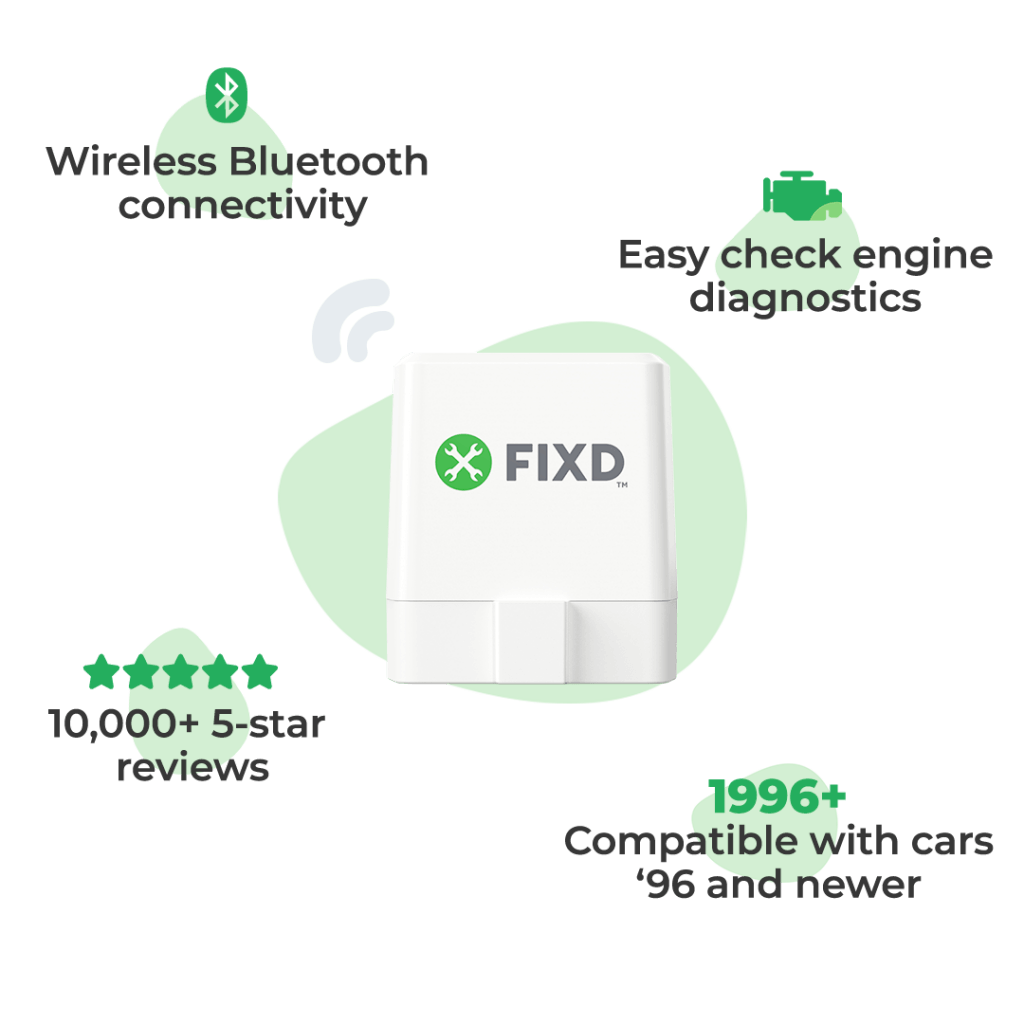1. Loose Gas Cap

If you see a check engine light after getting gas, the likely culprit is a loose or faulty gas cap. This is actually one of the most common reasons why a check engine light is triggered. Modern vehicles require a tight cap to prevent harmful fuel vapors from escaping into the environment. At the same time, a secure cap stops dirt and debris from entering the fuel tank.
Can I Drive?
Driving with a loose or broken gas cap is fine, but attend to the problem as soon as possible.
What DTC Codes?
P0457 is the check engine light gas cap code. You can confirm this code is what you have by using the FIXD Sensor and app or an OBD II code reader, you may also see P0455 and P0456 show up for this problem. All three codes are for the Evaporative Emission (EVAP) Control System, which limits gas vapors from entering the atmosphere.
Driving a car with a P0457 code isn’t immediately harmful to the engine or emission system but should be looked at right away to avoid permanent damage.
Symptoms: Check Engine Light Is On & Maybe A “Gas Cap” Dashboard Message
Depending on your car, you may notice a specific gas cap check engine light warning or a general CEL, which is a warning to check the emission system.
What Could It Cost To Fix the Problem?
In most cases, a P0457 code is resolved by retightening the gas cap, so the only cost in this situation is a few moments of time. Otherwise, a new gas cap runs anywhere from $20 to $60. More elaborate EVAP repairs start with diagnosis work that can cost up to $150.
How To Reset Check Engine Light?
The first step to clearing a P0457 code is removing and retightening the gas cap (listen for at least three clicks). Also, look to see if the cap seal is undamaged and if there are any obstructions on the threaded fuel filler neck. A Check Engine Light that’s caused by a loose gas cap can be cleared from the dashboard with one of several CEL reset methods, including driving to reset.
How Long Until the Check Engine Light Resets After a Loose Gas Cap?
Assuming the problem is just a loose gas cap, the code should clear itself after a few trips or about 30 miles of driving.
2. Spark Plug & Plug Wire Issues

Can spark plugs cause a check engine light to come on? Yes, Spark plugs wear out over time and can trigger a check engine light if they cause a misfire.
Can I Drive?
While continuing to drive with a bad spark plug or spark plug wire won’t cause immediate damage to the car, poor acceleration or a stuttering engine can present a safety hazard. So, address the issue as soon as possible.
What DTC Codes?
Will bad spark plugs cause a check engine light to flash and generate DTC codes? It depends. A bad spark plug (or spark plug wire) may cause a P0300, P0301, P0302, P0303, or P0304 code, but don’t assume the problem is just a faulty spark plug. These codes are indicators of severe potential engine trouble and should be looked at immediately. Because there is potential for significant damage to the catalytic converter, having the vehicle towed to a repair shop is advised.
Symptoms: Typically Only The Check Engine Light Is On
An illuminated CEL (including a flashing light) can indicate many problems. Still, this warning shouldn’t be ignored because of the potential for expensive engine and emission system repairs. Examine the engine and check the emission system.
Spark plug-related problems can also appear as rough idling, poor fuel economy, engine knocking, or an engine that’s hard to start in cold weather or after being off for several hours. You may even notice exhaust fumes with a hint of a gasoline smell, indicating the fuel hasn’t been entirely burned in the combustion chamber.
What Could It Cost To Fix the Problem?
Replacing spark plugs and spark plug wires is a straightforward repair that runs anywhere from $66 to $251, depending on who’s doing the work (you or a mechanic), and the quality of the replacement parts.
Will a Broken Spark Plug Wire Turn on a Check Engine Light?
A broken spark plug wire can cause a check engine light to come on but interestingly enough, it is usually caused by another repair: replacing old spark plugs. Swapping out a spark plug can inadvertently break an old and fragile spark plug wire. Seeing a check engine light blinking after changing spark plugs is a classic sign of this situation. Spark plug wires should generally be replaced at the same time as plugs.
3. Low Oil & Low Oil Pressure Problems
Can an oil change cause the check engine light to come on? Seeing a check engine light after an oil change or noticing a check engine light after adding oil isn’t uncommon and usually involves a simple fix. Start with ensuring that the oil dipstick and oil fill cap are properly seated; this is also a good time to double-check the oil is at the correct level. Although rare, sometimes the oil drain plug can become loose or fall out after an oil change, allowing the oil to empty. In this situation, stop everything and contact the repair shop where the work was done.
Having low oil pressure and a check engine light on after an oil change often just means the sensor needs time to reset. Other times the sensor has gone bad. If your check engine light is still on after replacing the oil pressure sensor, take a trip back to the repair shop.
Does the check engine light come on for an oil change, or can low oil cause the check engine light to come on? Generally, no. Most cars have a separate indicator for oil-related issues, like a low-oil warning or low oil pressure. Further, some vehicles have oil change
Can I Drive?
Unless you’re certain your car is just burning oil (not a leak or a bad oil pump etc.), pull over (where it’s safe) and turn the car off. Call a tow truck, and don’t take any chances, you can destroy your engine by driving with low oil or low oil pressure regardless of the cause.
What DTC Codes?
Low oil or low oil pressure in itself won’t cause a DTC code, but poor engine lubrication can lead to problems with internal components. Thus, generating DTC codes relating to these trouble areas. In addition, a faulty oil pressure sensor can show DTC P0522. In severe cases, low or contaminated oil can cause problems with the camshaft (P0014) or camshaft and crankshaft (P0016).
The FIXD app with an installed sensor can decipher things in plain English for you or be used as a standard OBD II code reader too, including live data for diagnosis.
Symptoms: Oil Warning Light And Check Engine Light Are On
Noticing the check engine light and oil light on at the same time should be looked at right away. Driving a car with low oil or low oil pressure can cause increased friction with the engine’s moving parts, resulting in catastrophic engine failure.
Additionally, stop driving immediately for any problems traced to a camshaft or crankshaft (P0014 or P0016) fault.
Few car problems are as severe as low oil or low oil pressure. Ignoring a check engine light caused by low oil pressure or an engine oil warning light is the surest path to expensive repairs. Internal engine components need sufficient lubrication to operate correctly.
Cars burn (use) oil. That’s what they do, it’s natural. If your car is only burning oil make sure you regularly top off the oil and you’ll be back on the road in no time.
On the other hand, seeing a puddle of oil underneath the car or noticing a burning oil smell from the engine is a cause for alarm. Low engine oil and low oil pressure can also cause unusual engine noises and overheating. A bad oil pump, for instance, will often increase engine temperature and cause engine noise.
What Could It Cost To Fix the Problem?
Correcting the issues surrounding oil and oil warning/check engine lights could be as simple as adding oil to the engine for a few dollars per quart. However, other related repairs can add up.
|
Repair/Replacement |
Cost |
|
$40 to $120 |
|
|
$132 to $150 |
|
|
Position sensor (crankshaft or camshaft) |
$168 to $227 |
|
$300 to $400 |
|
|
$567 to $743 |
|
|
$1,151 to $1,357 |
|
|
$1,850 to $2,146 |
|
|
$657 to $1,857 |
4. O2 Sensor
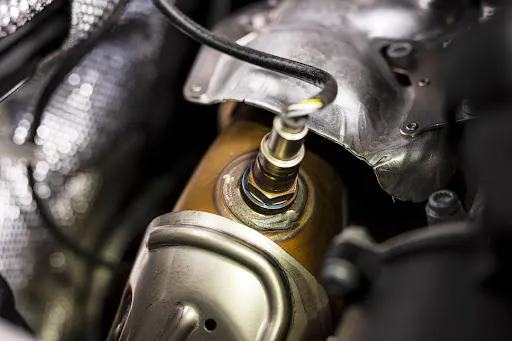
An O2 sensor check engine light appearing is nothing unusual, particularly on older cars with a failing pollution control system. A check engine light being triggered by an oxygen sensor indicates the O2 sensor can no longer properly monitor engine functionality like the fuel-to-oxygen ratio, air temperature, and other factors needed to adjust emission levels. It’s also not uncommon for a car to have a check engine light that goes on and off for the O2 sensor.
Can I Drive?
Your car is drivable with this issue, but don’t hold off too long on repairs. Driving with a faulty O2 sensor could lead to a damaged catalytic converter. Turning what could have been $200 – $500 O2 sensor replacement into a $2000 catalytic converter replacement.
What DTC Codes?
DTC Code P0137 can warn of emissions-related troubles, including a problematic O2 sensor. The emissions system can generate several codes, and P0137 often involves the O2 sensor.
Symptoms:
Seeing an illuminated check engine light and identifying (via the FIXD app or an OBD II reader) the O2 sensor as the trouble should be accompanied by a visit to the repair shop if you are not a DIY repair person.
Symptoms to be alert for with a bad O2 sensor include decreased fuel economy, a rotten egg smell from the exhaust, reduced engine performance, and a failed emission test.
What Could It Cost To Fix the Problem?
A new O2 sensor costs about $200-$300. Still, there may be diagnostic charges (up to $150) to confirm what needs to be fixed and a check of the emission system.
I changed my O2 sensor and the check engine light is still on
The presence of an illuminated CEL can come from the computer needing to be reset, the replacement of the wrong sensor, or an issue with another sensor. Before replacing a faulty oxygen sensor, make sure you check for all possible causes for your fault code and that it really is the cause of the CEL.
5. Catalytic Converter
Seeing a check engine light for a catalytic converter malfunctioning is a common occurrence, particularly with an older car. Through an elaborate filtering system, the catalytic converter transforms harmful elements (hydrocarbons, nitrogen oxide, and carbon monoxide) from exhaust fumes into friendlier substances (water vapor, nitrogen, and carbon dioxide)
Can I Drive?
You can operate a car with a failing catalytic converter but have the problem examined as soon as possible to avoid further engine damage.
What DTC Codes?
Look for DTC P0420 or P0430 as a sign that something is wrong with the catalytic converter. Check the emission system and get your converter repaired if needed. If you haven’t made a repair yet and the check engine light goes off by itself, the catalytic converter may be in the early stages of failure.
Regardless, either of these codes should be looked into as soon as possible. A modest amount of driving is fine, but ignoring a P0420 or P0430 completely could lead to engine damage.
Symptoms: Catalytic Converter Warning Light Or Check Engine Light Is On
Most modern vehicles rely exclusively on a CEL to warn of a catalytic converter problem. Still, older cars may have a dedicated catalytic converter dashboard light. If you’ve recently replaced the catalytic converter and the check engine light is still on, something (like oil) may be fouling the converter. This issue should be addressed immediately, or you may replace the catalytic converter for a second time.
You’ll notice that the signs of a bad catalytic converter are similar to a problematic oxygen sensor: a sluggish engine, reduced mileage, a putrid exhaust smell, and polluting emissions. This comes as no surprise as the two components work hand-in-hand.
What Could It Cost To Fix the Problem?
A simple and inexpensive repair can involve a catalytic converter cleaner to turn off the check engine light. A container costs $20 to $30 and is poured into the gas tank. If this first measure doesn’t resolve matters, a replacement catalytic converter costs about $1,800.
Will removing the catalytic converter cause the check engine light to come on?
Yes, a car’s pollution control system requires all elements to be present to be functional. Similarly, catalytic converter theft will cause the light to illuminate.
Will a high-flow cat cause a check engine light?
Yes, a high-flow catalytic converter generates an error code because the pollution control system assumes a standard converter is being used.
How to bypass the catalytic converter check engine light - A common but, typically, bad idea
A check engine light that’s come on due to a catalytic converter-related issue can be cleared with an OBD II reader. However, this action won’t clear the notification from the emissions system, and the car is unlikely to pass any emissions testing. The only way to completely remove the CEL is through a proper repair (including replacing the catalytic converter, if needed). If you don’t repair your catalytic converter, you could cause serious damage to your car.
6. Mass Airflow Sensor
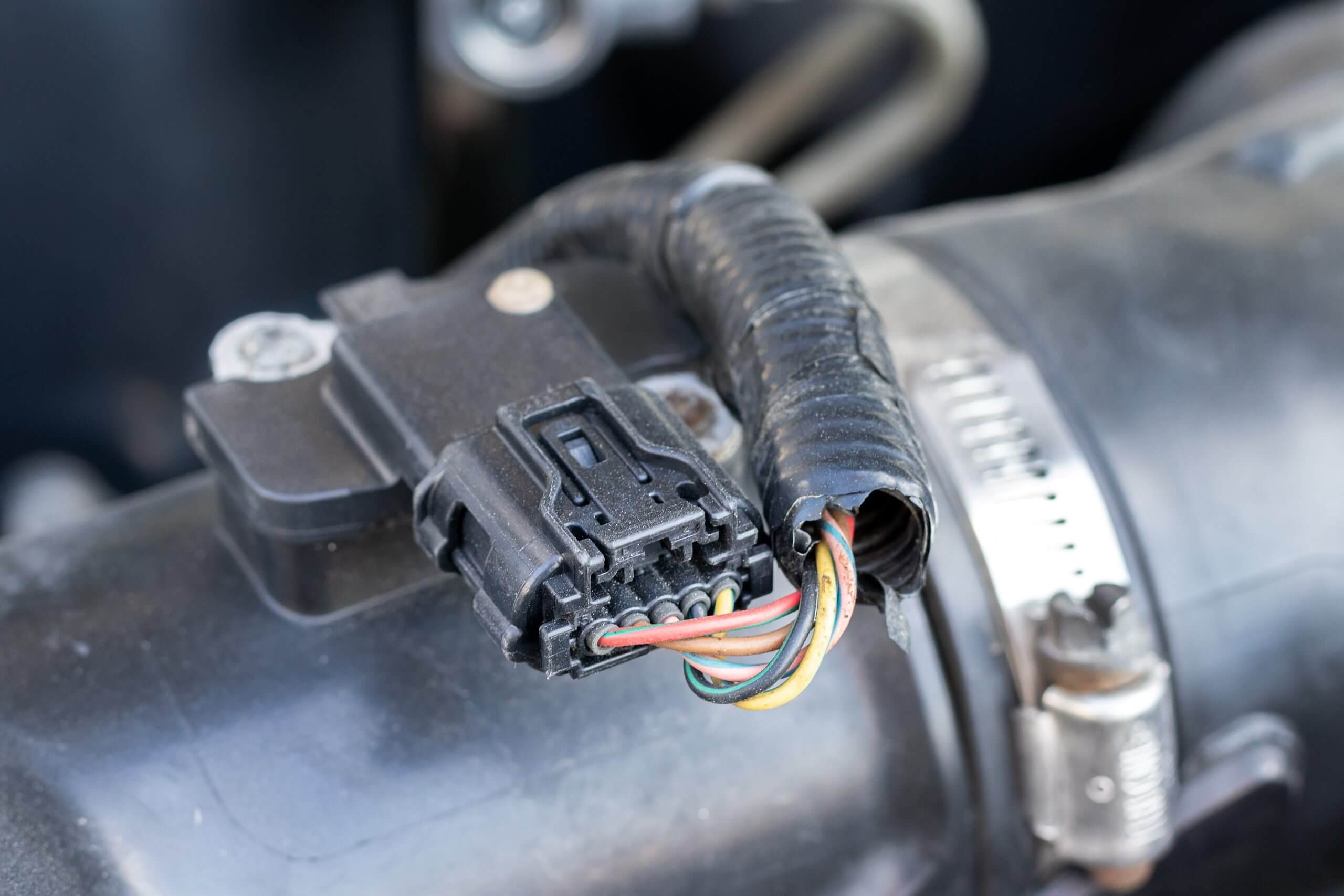
The mass air flow sensor (MAF) measures the airflow entering the engine and is a vital component in a modern fuel injection system. Having a malfunctioning or dirty mass air flow sensor (or a dirty air filter) can result in an improper air-to-fuel ratio being fed to the engine’s combustion chamber and may even cause a misfire if the MAF sensor malfunction is severe enough.
Can I Drive?
It’s acceptable to drive with a MAF sensor problem. However, remember that poor acceleration and other engine performance issues can create a dangerous situation (like during highway merging or turning at an intersection).
Symptoms: Typically, Only The Check Engine Light Is On
As we’ve covered, a check engine light can mean several things. So, identifying the specific problem early on via the FIXD app or an OBD II code reader is vital.
Driving with a malfunctioning MAF sensor won’t immediately harm the engine, but ignoring the problem can lead to expensive engine repairs. Have the issue looked at as soon as possible. Keep in mind that so many vehicle systems are interconnected, so MAF sensor problems can spill over into the operation of the catalytic converter, requiring a check of the emission system, or even causing misfires, leading to potential engine damage.
Anything that affects the proper fuel and air delivery to the engine, like a bad mass airflow (MAF) sensor, will cause engine hesitation (especially during acceleration or while the car is under a heavy load) and rough idling. You may also come across a car that’s hard to start, has a drop in fuel economy, or emits exhaust fumes with a gas smell.
What Could It Cost To Fix the Problem?
Getting a MAF sensor back to working can often involve simple DIY repairs, including using a MAF sensor cleaner (about $10) and changing a dirty air filter ($20 to $70). At a minimum, ignoring an engine misfire can cause damage to the spark plugs, which costs $66 to $251. In severe cases, the exhaust valves might need replacement ($1,100), or the pistons could require repair (piston ring replacement can run from $1,800 to $3,500).
What if there’s a check engine light after cleaning the MAF sensor?
Cleaning the MAF sensor is a good first step when dealing with a bad component. However, consider replacing the air filter when this basic repair is unsuccessful. It’s a good habit to clean the MAF sensor when replacing the air filter.
If these fundamental fixes don’t work, then a new mass airflow sensor is the likely next step. Replacing the MAF sensor runs from $220 to $330. However, more expensive work can involve a new catalytic converter, costing as much as $1,800.
Can your mass airflow sensor be bad without a check engine light?
Yes, a bad mass air flow sensor with no check engine light is always possible. Other symptoms can include sluggish engine performance, stalling, or rough idling.
What if I replace the mass air flow sensor and the check engine light is still on?
Clearing the check engine light after replacing the mass airflow sensor by resetting the electronic control unit (ECU) may be necessary. There’s also the possibility that the MAF sensor wasn’t installed correctly. You’ll want to contact the mechanic to get this taken care of. Or, if you are DIYing, you can learn How To Clear A Check Engine Light.
Does unplugging your mass airflow sensor and reconnecting it make your check engine light go on?
Yes, disconnecting and reconnecting the MAF sensor can cause the CEL to illuminate. In this situation, the ECU should be reset.
I have a power ground and signal to the mass airflow sensor, so why is my check engine light still on?
Getting the circuitry right for a MAF sensor is only part of the fix. Other key parts of the repair are ensuring there’s no air leak (between the sensor and the throttle body) and that the sensor is properly installed.
7. Overheating
Among the most severe problems a vehicle may encounter is high engine temperature. So, noticing a car overheating with a check engine light requires immediate action. Ignoring this condition can lead to catastrophic engine failure. So, at the first sign of overheating, pull over (where it’s safe to do so) and turn the car off.
Importantly, don’t ever operate a car with an overheated engine. Call a tow truck, or if the repair shop isn’t too far away, let the engine cool down and drive to the mechanic.
Topping off coolant or water if you have a leak can help you drive just a little further if you are stuck. But, never pour water into a hot engine, let it cool down first. Also, keep in mind that pure water in your engine and radiator in freezing temperatures can result in frozen water in your cooling system. Freezing water can expand as it turns into ice and cause serious damage to your car. If you add water to get home or to a shop, make sure you drain it before the engine gets cold.
Can I Drive?
Do not operate a car with an overheated engine. Call a tow truck, or if the repair shop isn’t too far away, let the engine cool down and drive to the mechanic.
Topping off coolant or water if you have a leak can help you drive just a little further if you are stuck. But, never pour water into a hot engine, let it cool down first. Also, keep in mind that pure water in your engine and radiator in freezing temperatures can result in frozen water in your cooling system. Freezing water can expand as it turns into ice and cause serious damage to your car. If you add water to get home or to a shop, make sure you or the mechanic drains it before the engine gets cold.
What DTC Codes?
P0217 is the principal DTC code for an engine overheating.
Symptoms: Engine Temperature Warning Light And Check Engine Light Are On
Depending on the car, an engine temperature warning light or check engine light will illuminate if the engine overheats. Some cars may have both indicators or an engine coolant temperature gauge and a Check Engine Light.
Obvious signs (besides a CEL or temperature warning light or temperature gauge) of engine overheating are steam or a burning smell from underneath the hood. Sluggish engine performance is another.
What Could It Cost To Fix the Problem?
Car repairs relating to overheating can be as simple and inexpensive as adding more coolant (about $10 to $30 per gallon). A full coolant change can run $98 to $123 if handled by a mechanic. Other work to resolve an overheating issue can include replacing a radiator hose ($97 to $424), installing a new thermostat ($477 to $512), swapping out a defective radiator fan ( $261-$855), or Replacing your radiator ($500 to $3500); to name a few possible repairs.
Can low coolant cause a check engine light to come on?
Yes, most cars will signal a low coolant level by illuminating the check engine light, low coolant light, or another indicator.
8. Transmission
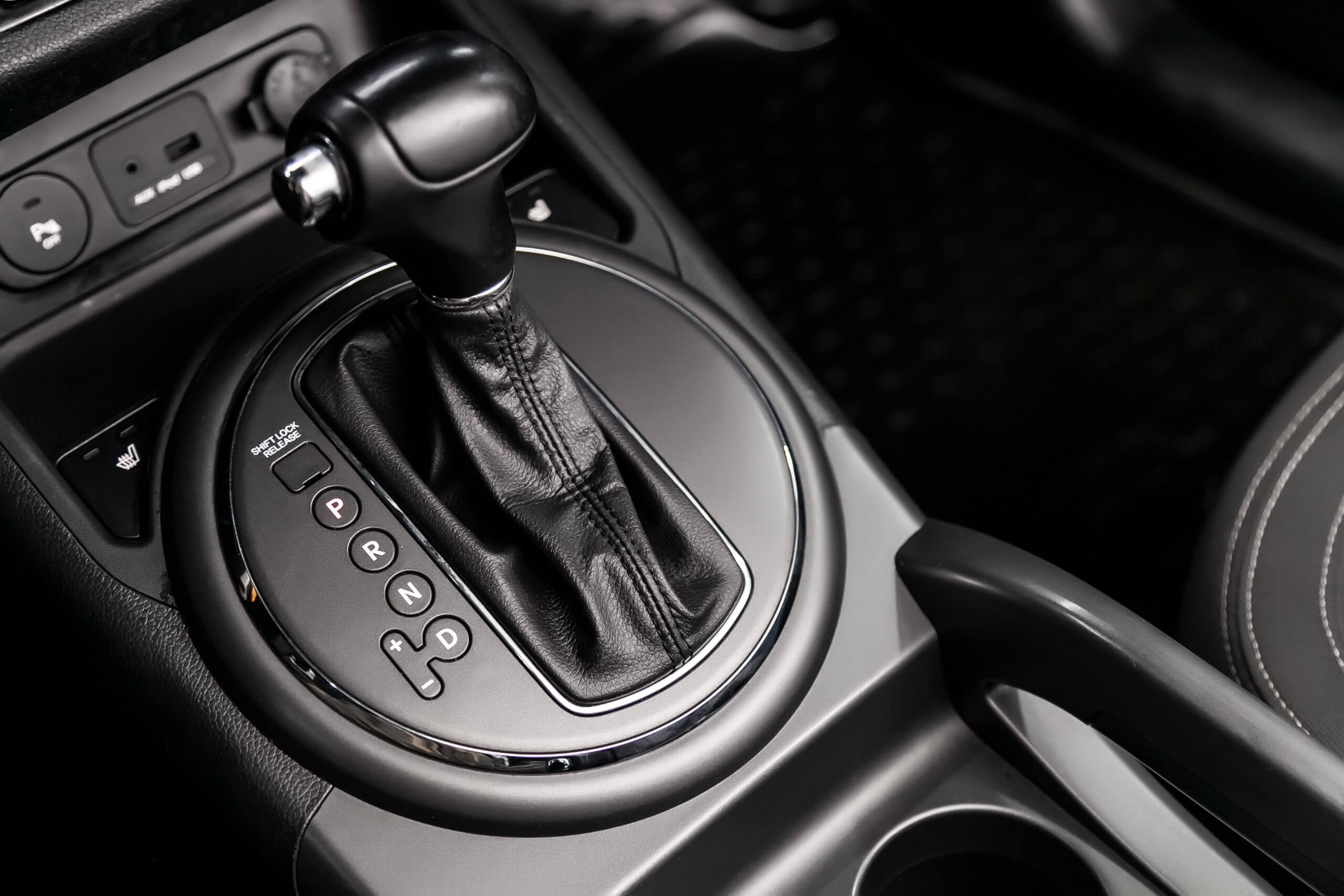
Besides engine problems, few car repairs are as serious and urgent as solving transmission issues. Today’s gearboxes are intricate assemblies designed to balance fuel economy and performance, and this complexity can make repairs extremely expensive. Fortunately, every transmission problem doesn’t involve hundreds or thousands of dollars, but getting any issues looked at right away is vital.
Can I Drive?
Because a weakened transmission can quickly accelerate (pun intended) into a destroyed transmission, it’s best not to drive a car with a finicky gearbox.
What DTC Codes?
There are numerous transmission-related DTC codes to watch out for, but the most significant is P0700, a transmission control system malfunction. If you remember nothing else about this code, it’s this: stop driving immediately.
You may also come across P0705, resulting from a check engine light for a transmission sensor. While less severe than P0700, the repair shop is the only place you should drive to with this code.
Symptoms: Transmission Light And Check Engine Light Are On
Seeing a transmission light or CEL is a clear warning sign of transmission problems, but having no check engine light is possible too. For instance, the transmission shift cable (which controls shifting to park, drive, and neutral) can become disconnected. This makes the transmission inoperable, but you’re unlikely to see a transmission warning indicator or check engine light. Similarly, a bad clutch in a manual transmission won’t trigger a warning light.
Some cars will have a separate indicator that alerts drivers about gearbox problems, while some use only a check engine light as a warning.
Additional indicators of a troubled transmission include a fluid leak under the car, a burning smell from underneath the vehicle (which can enter the cabin), a whining or grinding noise while driving, or gear shifts that take a while to kick in (or don’t happen at all).
What Could It Cost To Fix the Problem?
Changing the transmission fluid, a basic maintenance task, can cost anywhere from $230 to $475, depending on the car and whether you or a professional are doing the work. Replacing a defective sensor (through a mechanic) can cost $100 to $300. However, the complete rebuilding of a transmission is among the most expensive repairs a car owner can face. In this situation, the job can range from $1,800 to $4,500.
Will a check engine light come on for the transmission?
It depends on the car, but you’ll notice a transmission error light or check engine light (or both).
Can low transmission fluid cause a check engine light to come on?
The lack of transmission fluid can cause some gears to function incorrectly, triggering a check engine light or transmission error message.
What if I see a check engine light after a transmission fluid change?
Under normal circumstances, a transmission fluid change won’t generate a check engine light. However, it’s not unheard of for a transmission solenoid (a valve that controls fluid flow) to get damaged during service work.
9. Battery
Own a car long enough, and you’ll need to change the battery; they only last for three to five years. Often, a dead battery only becomes noticeable once the car won’t start and the check engine and(or) battery light are on.
Can I Drive?
You won’t harm a car by driving with a dying battery, but installing a new battery can easily overcome the risk of getting stranded.
What DTC Codes?
Because modern cars rely heavily on a steady flow of electricity, a failing battery may generate several DTC codes from multiple systems. The one to pay attention to (as far as the battery is concerned) is P0562. This is an indicator of low voltage, which can come from a faulty battery, a bad alternator, or a problem with the circuitry. The car may be drivable with a P0562 error code, but you may find yourself stranded. To avoid this situation, have a mechanic examine the electrical system if you’re unfamiliar with the steps.
Symptoms: Battery Light On In The Car And The Check Engine Light Is On
Seeing one or more of these error messages is a clear sign of a battery problem or electrical issue.
Look for the classic red flags of a bad car battery, like an engine that’s slow to turn over or a clicking sound when turning the ignition key (and the car not starting). Flickering headlights and corroded battery terminals are other indicators.
Although not a common occurrence, seeing a check engine light on after a battery change usually means the replacement battery is bad or the power cables are loose or damaged. You’ll want to resolve this issue immediately so you don’t get stranded later.
What Could It Cost To Fix the Problem?
Assuming the problem is solely the battery, expect to pay $150 to $400 for a replacement (the more expensive and complex the car, the pricier the battery). Other possible outlays include paying for diagnostic services ($150) or a new alternator ($570-$750).
What does it mean when the check engine light and the battery light are on?
While these notifications can mean several things, generally, it means the car battery needs replacement. You’ll want to have the battery tested to confirm its condition.
Can a bad battery cause a check engine light to come on?
Yes, even if your car has a separate battery warning light, the check engine light can illuminate due to a failing battery. Low voltage, which results from a bad battery, can cause other vehicle systems not to operate properly.
What if there’s a check engine light on after a battery change?
While uncommon, seeing a CEL on after a battery change usually means the new battery may be bad (it happens, particularly if it’s been sitting on a shelf for a long time). Or, the battery cables may be loose or damaged. Or the battery may not be adequately grounded.
How to reset the check engine light after a battery change
Once any problems are ruled out with the new battery and its connections, figuring out how to reset the check engine light is straightforward. Here’s how to reset a check engine light.
BTW, often times the light resets itself when the battery is swapped. You’ll only need to clear it if you CEL is still on after swapping.
10. Vacuum Leak
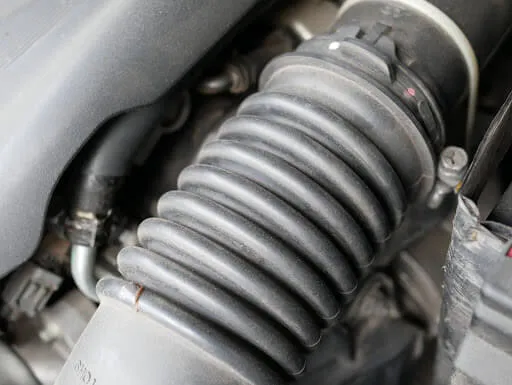
A car requires an ideal balance of gas and air to maximize performance and economy; any change in this proportion will affect how a vehicle operates. We’ve covered how the MAF and O2 sensors impact things, but maintaining a vacuum within the fuel system is equally important.
Can I Drive?
Driving with a vacuum leak isn’t a significant issue, but get things fixed when it’s possible to do so.
What DTC Codes?
Common DTC codes for vacuum leak-related troubles include P0171, P0172, and P0174, indicating that the engine is getting too much fuel or not enough air. However, other problems like a bad fuel pump, clogged fuel injectors, or excessive idling (P0507) can also be an issue. You can keep driving if you notice one of these codes, but give the matter prompt attention to avoid damage to the engine or catalytic converter.
Symptoms: Usually, Only The Check Engine Light Is On
A check engine light is the only visible indicator of a possible vacuum leak. However, you may notice a sputtering and sluggish engine. Use the FIXD app or an OBD II code reader to zero in on the problem.
Vacuum leaks aren’t always easy to find or diagnose but some are. Listen for a high-pitched or whistling noise from under the hood as outside air enters the engine. Although a whistling noise alone is a good indication, if the engine also has a rough idle too, you can be pretty sure it’s a vacuum leak.
What Could It Cost To Fix the Problem?
At a minimum, you’ll pay a mechanic for diagnostic time to isolate the source of the vacuum leak. This cost should be around $75 to $150 unless it’s something noticeable (like a disconnected hose). Replacing a damaged hose can run $100 to $200, depending on accessibility and the car.
Will a vacuum leak cause a check engine light?
Yes, a loose or cracked hose will illuminate the check engine light due to a loss of efficiency in the fuel system. There can also be leaks along the air intake system, such as along the seal that secures the throttle body (which controls the amount of air entering the engine).
11. Exhaust Gas Recirculation Valve Failure
The exhaust gas recirculation (EGR) valve regulates exhaust gases to lower nitrogen oxide emissions, improve engine efficiency, and increase fuel economy. An EGR valve can go bad or just get clogged with carbon buildup over time.
Can I Drive?
Short-term driving with a bad EGR valve is OK, but ignoring the problem can lead to replacing the catalytic converter. A bad EGR, O2 sensor or catalytic converter can be driven on but, you should get the repair as soon as possible to avoid increasing repair costs.
What DTC Codes?
There can be numerous DTC codes related to the EGR valve. In particular, P0400, P0401, and P0402 relate to the component’s functionality. Meanwhile, P0403, P0404, P0405, P0406, P0407, and P0408 correspond to a circuitry or sensor issue within the valve. The car is drivable with any of these codes appearing; however, the problem must be looked at immediately to prevent engine damage. Remember that a car may operate poorly or not at all with a bad EGR valve.
Symptoms: Check Emission System Lights And The Check Engine Light Are On
A malfunctioning EGR valve can cause the check emission system light or the CEL to illuminate (or both). Knowing the trouble code can help pinpoint if the problem involves the EGR valve or another component.
The signs of a faulty EGR valve are very similar to the signs of a faulty O2 sensor or the catalytic converter. Engine knocking and stalling, gas-scented exhaust fumes, and a failed emissions test are all shared symptoms.
What Could It Cost To Fix the Problem?
A can of cleaner costs about $10, and a replacement EGR gasket runs $20 to $50 for those who are DIY-inclined and believe a replacement isn’t needed. Replacing the EGR valve through a mechanic means shelling out $332 to $413 (about 75% of this amount being the cost of the part).
12. Your Vehicles Check Engine Light Is On For No Reason Or Malfunctioning (& other common reasons for DTCs)
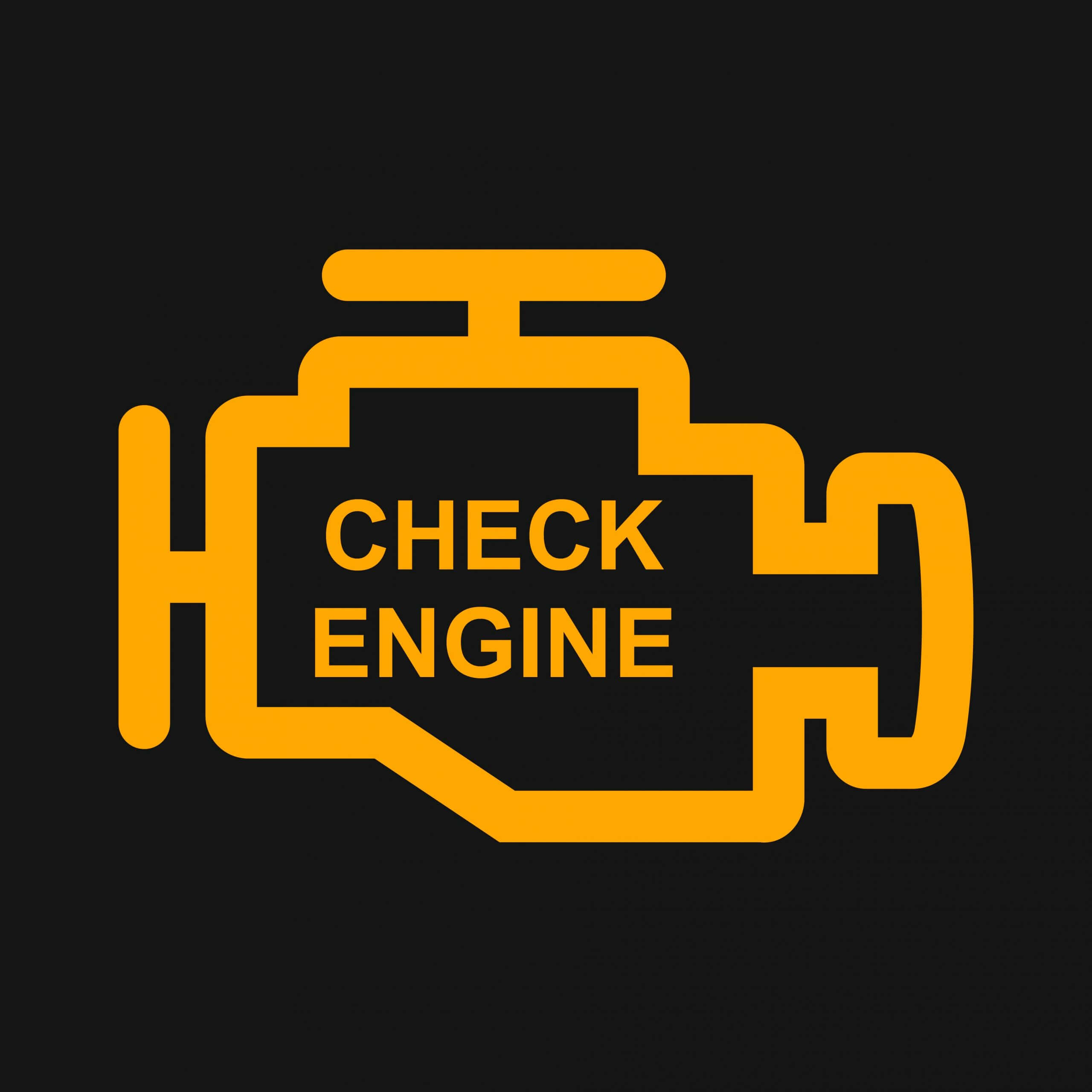
While car owners would like to think their cars are rolling examples of computerized perfection, the truth is that technology isn’t perfect. Asking if a check engine light can come on for no reason is a valid question.
Suspicious check engine lights can happen for several reasons. Some older cars are engineered for odometer triggering that serves as a maintenance reminder at specific mileage intervals. False triggering or other triggering can come from a computer system that believes a component isn’t operating correctly – a loose wire or connector, an electrical issue, and hundreds of other triggering possibilities exist. Fuel with higher amounts of methanol/ethanol can also trigger a check engine light so make sure you are filling your car with gasoline that has the manufacturers recommended octane rating.
Can I Drive?
Is there any unusual sound, smell, or vibration? Does something not look or feel right? If something isn’t normal about your car (besides the CEL), calling a tow truck is usually wise. Spending time and money on a tow truck is far better than making matters worse by continuing to drive and potentially increasing the cost of your repair tenfold.
What DTC Codes?
There are thousands of diagnostic codes to recognize, understand, and deal with. Here are the major codes separated by the vehicle systems.
|
P0000 to P0299 |
Air-Fuel Mixture |
|
P0300 to P0399 |
Ignition Control |
|
P0400 to P0499 |
Emission Control |
|
P0500 to P0599 |
Engine Idling Control |
|
P0600 to P0699 |
Control Module/Output Control |
|
P0700 to P0999 |
Transmission Control |
These are the ones you are most likely to encounter. There are many more, and some are exclusive to specific automakers.
Symptoms: Other Warning Lights And The Check Engine Light Are On
The best way to handle a CEL, or any other dashboard warning indicator is to identify the trouble immediately. The FIXD app or an OBD II code reader can help. This is an essential step because there’s a big difference between driving with a dirty air filter v.s. driving with an overheated engine. If you don’t check for problems now, you may feel that difference in your wallet later. Others may be a risk to your safety, for instance, a brake warning light or ABS light may indicate you need urgent brake repair, it’s not just the lights for your car engine that matter.
What Could It Cost To Fix the Problem?
For every DTC code, there’s a repair. It’s difficult to assign a general cost for service work until the cause of the problem is known. Take a look at the other most common problems on this list, or check out our check engine light articles for each vehicle make and find your cars’ most likely CEL causes and repair costs.
Why is my vehicle's engine light on, but nothing seems wrong?
While a CEL not working properly is always possible, assuming something else is wrong is safer. Just because your car seems to be operating fine now doesn’t mean a vital component or system isn’t on the brink of failure. In other words, don’t ignore a DTC code or check engine light.
13. Failing Aftermarket Alarm
High-quality aftermarket alarms are engineered to be installed without disrupting normal vehicle operations. However, improper installations or cheap systems are another story. Tying in an alarm to the wrong part of the electrical system can cause a CEL to come on. And a sub-par alarm may not be designed to work correctly with your car.
Can I Drive?
Driving with a fussy aftermarket alarm system won’t damage the car (but may drain the battery). However, you could have to deal with problems locking and unlocking the doors, trouble starting the engine, and an alarm that goes off when there’s no security issue. It’s also best to get this fixed so you don’t develop the habit of ignoring your check engine light should a more serious issue come up.
Symptoms: Other Warning Lights And The Check Engine Light Are On
Be alert for an illuminated check engine light that appears shortly after installing an aftermarket alarm. It’s almost guaranteed that the system was installed incorrectly.
What Could It Cost To Fix the Problem?
Repairing an issue related to a finicky aftermarket alarm could be as simple and cost-effective as disconnecting the system. Short of that uncomplicated solution, the next step is bringing in a mechanic to diagnose the problem, with charges running $75 to $150 at a minimum. Keep in mind that extensive troubleshooting can take multiple hours. And costs can be even higher if the add-on alarm system damages any components.
Can a car alarm cause a check engine light?
Yes, a car alarm can drain the battery, cause low voltage in the electrical system, and other issues, leading to an illuminated check engine light.
FIXD has scanned thousands of cars and created a solution that explains vehicle troubles in plain English. With the FIXD Sensor and free app, looking up DTC codes is unnecessary. FIXD quickly tells you what your check engine light means and helps you save money by avoiding unnecessary repairs when you visit the auto repair shop or dealership. The app can also help you avoid check engine related problems in the first place by alerting you when your car needs important maintenance, such as oil changes. Click here to learn more and get FIXD for only $19.99 (regular price $59)!
Frequently Asked Questions: The 13 Most Common reasons For A Check Engine Light
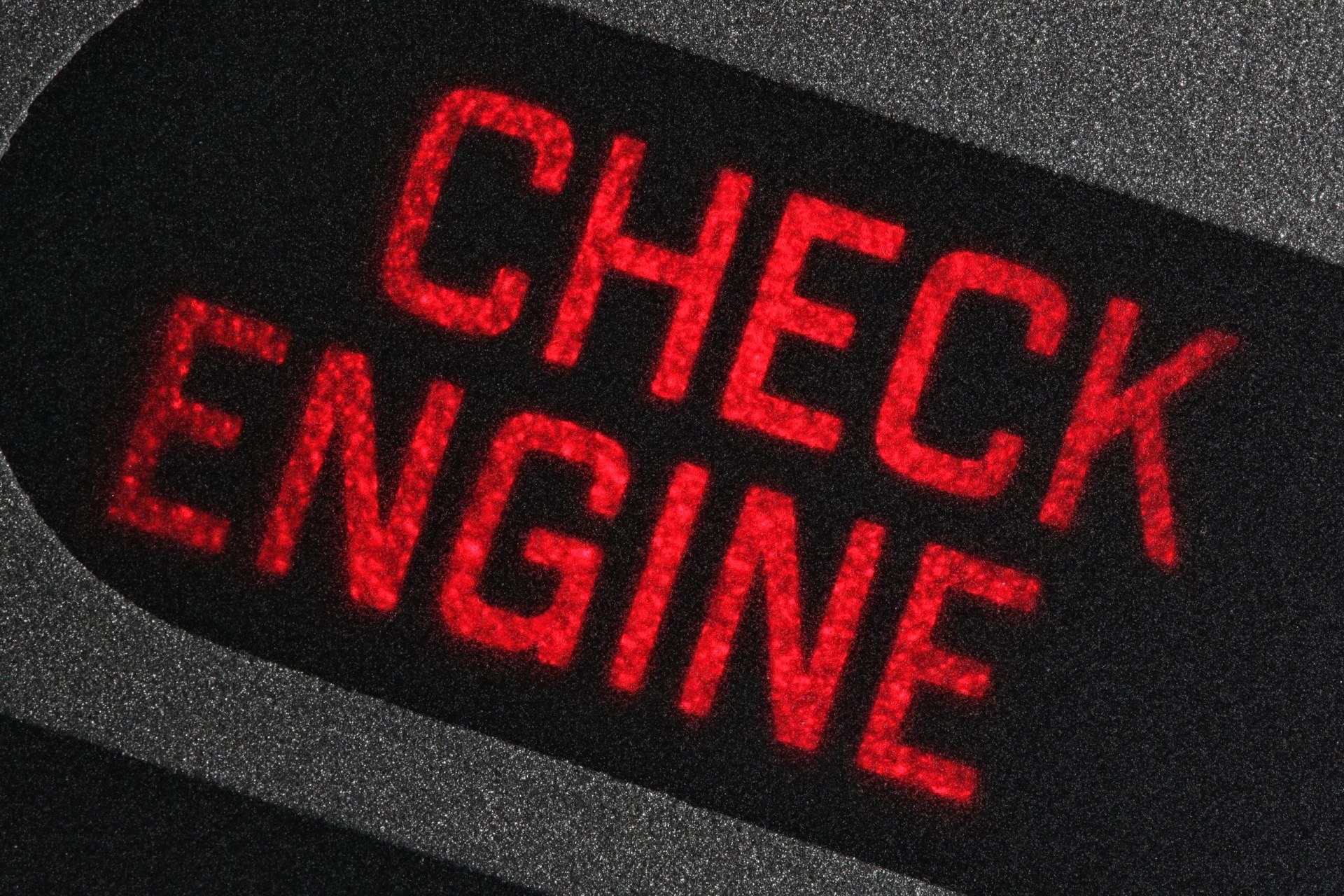
How to Read & Diagnose Your Check Engine Light With & Without A Scanner
Knowing how to read a check engine light is an essential part of car ownership. We think the easiest way to understand what’s going on with your engine is to use the FIXD Sensor and free app, which will scan the car and provide the DTC code in a simple, plain English answer. An OBD II scanner is another option, but you’ll still need to look up the error code. Alternatively, the owner’s manual for the car may provide information about the check engine light too.
"Check Engine" Light: Flashing vs. Static - What's The Difference?
The meaning of a check engine light has a lot to do with whether it’s flashing or not. If it’s flashing, it’s serious. A flashing light indicates an urgent problem requiring immediate attention, versus a static light, indicating a less severe issue. However, any CEL that’s on (flashing or not) should be considered serious until the problem is identified.
What Do You Do When Your "Check Engine" Light Comes On?
Knowing what to do when a check engine light comes on is also essential. As soon as the light comes on, find a safe place to pull over. Unnecessary driving with a severe problem can cause significant damage, so it’s best to assume the problem is substantial. Ideally, you’ll have the FIXD app or an OBD II code reader handy to scan the cars ECU for the DTC code. The vehicle owner’s manual may also have references. From there, you’ll need to determine if the car is safe to drive or if a tow truck is necessary.
Where Can You Get Your Check Engine Light It Checked For Free?
It’s not hard to get your engine light checked for free. Many auto supply stores, like AutoZone and Advance Auto Parts, offer a free DTC code reading service. Some repair shops also offer to read the DTC code at no charge.
How Do You Reset A Check Engine Light?
Learning how to reset a check engine light is as simple as using the FIXD app or an OBD II code reader. However, the CEL may reappear if the problem causing the check engine light hasn’t been fixed.
Can Bad Gas Cause A Check Engine Light?
Yes. Impurities can foul the fuel filter, cause an engine to misfire, and lead to other issues, all of which can cause the check engine light to illuminate.
Can I Ignore My ‘Check Engine’ Light?
Wondering how long you can drive with a check engine light on is natural. But, most car problems don’t go away on their own, and ignoring these issues can lead to expensive repairs. In short, don’t delay repairs; things can only get worse. And driving with a severe problem can severely damage your engine.
Will The Check Engine Light Go Off By Itself?
Yes, in some cases, the CEL will go off if the problem is temporary (like a loose gas cap), or if the issue comes and goes (like fluctuating voltage).
Does The Check Engine Light Turn Off Automatically After Repair?
In some situations, a repair will eliminate the error causing the CEL to come on and turn off the check engine light. In addition, professional mechanics will ensure that the DTC code and CEL are no longer present as part of the repair.
Can Cold Weather Cause A Check Engine Light?
Yes, your car has a network of sensors that can become damaged during extreme weather. So, seeing a check engine light in cold weather could be the result of a sensor error. Regardless, the problem should be investigated.
Can An Exhaust Leak Cause A Check Engine Light?
Yes. An exhaust system leak may introduce more oxygen into the exhaust gasses, causing one of your oxygen (O2) sensors to signal a problem.
My Check Engine Light Came On After Driving Through Water; What Now?
Seeing a check engine light after driving through water is a cause for concern, as getting water inside the engine or on electrical components can be severely damaging. When safe to do so, pull over and turn off the car. Contact a tow truck to take the vehicle to a mechanic for inspection, and you may be able prevent severe engine damage.

Dave Goldberg is an automotive journalist and lifelong car fanatic. He writes for numerous enthusiast and business outlets and is an ongoing contributor to HotCars.com, one of the most popular car culture websites. When he’s not writing or driving, Dave is either under a hood or asleep. His credentials include a BA in Journalism from The George Washington University.








